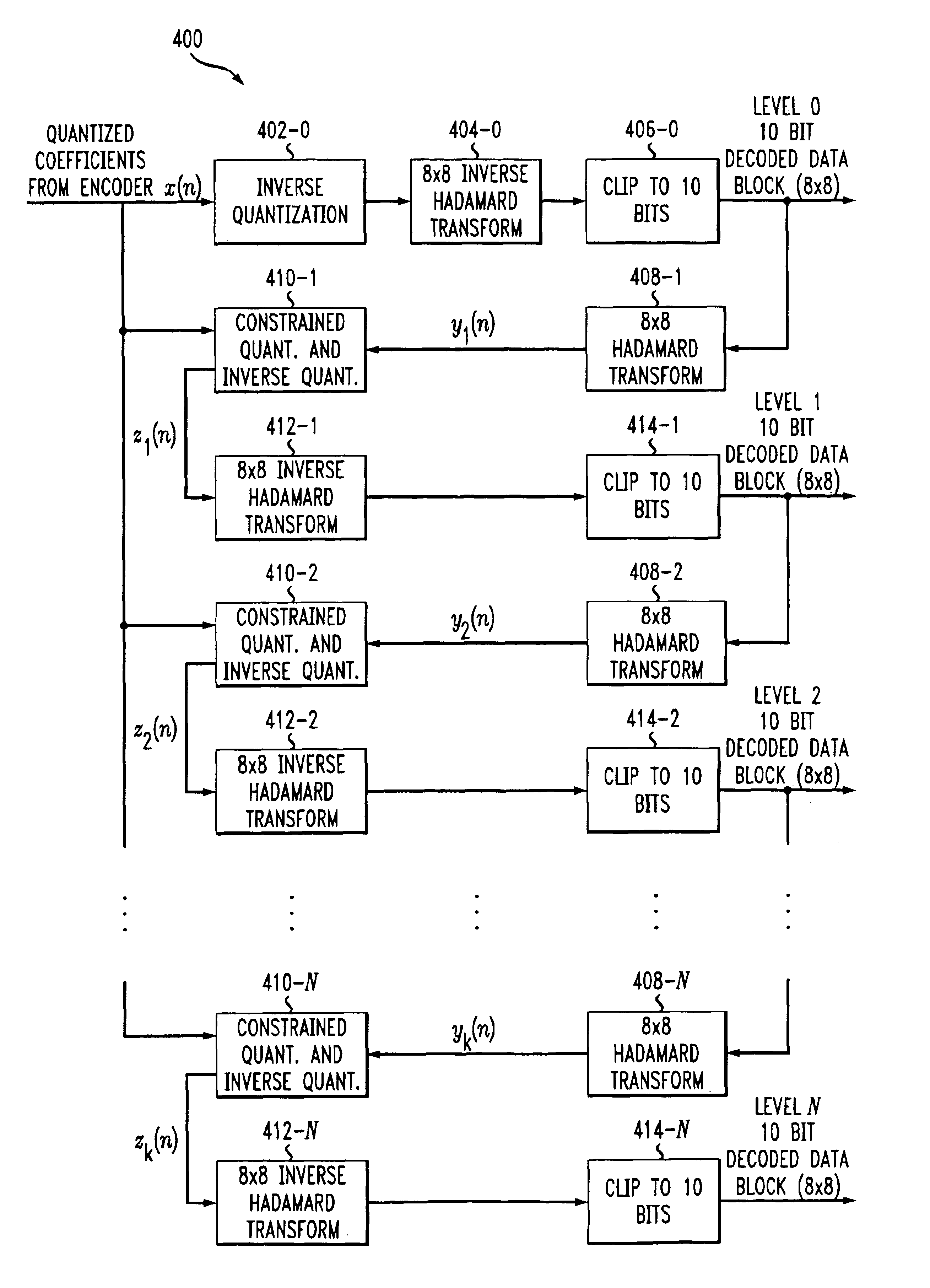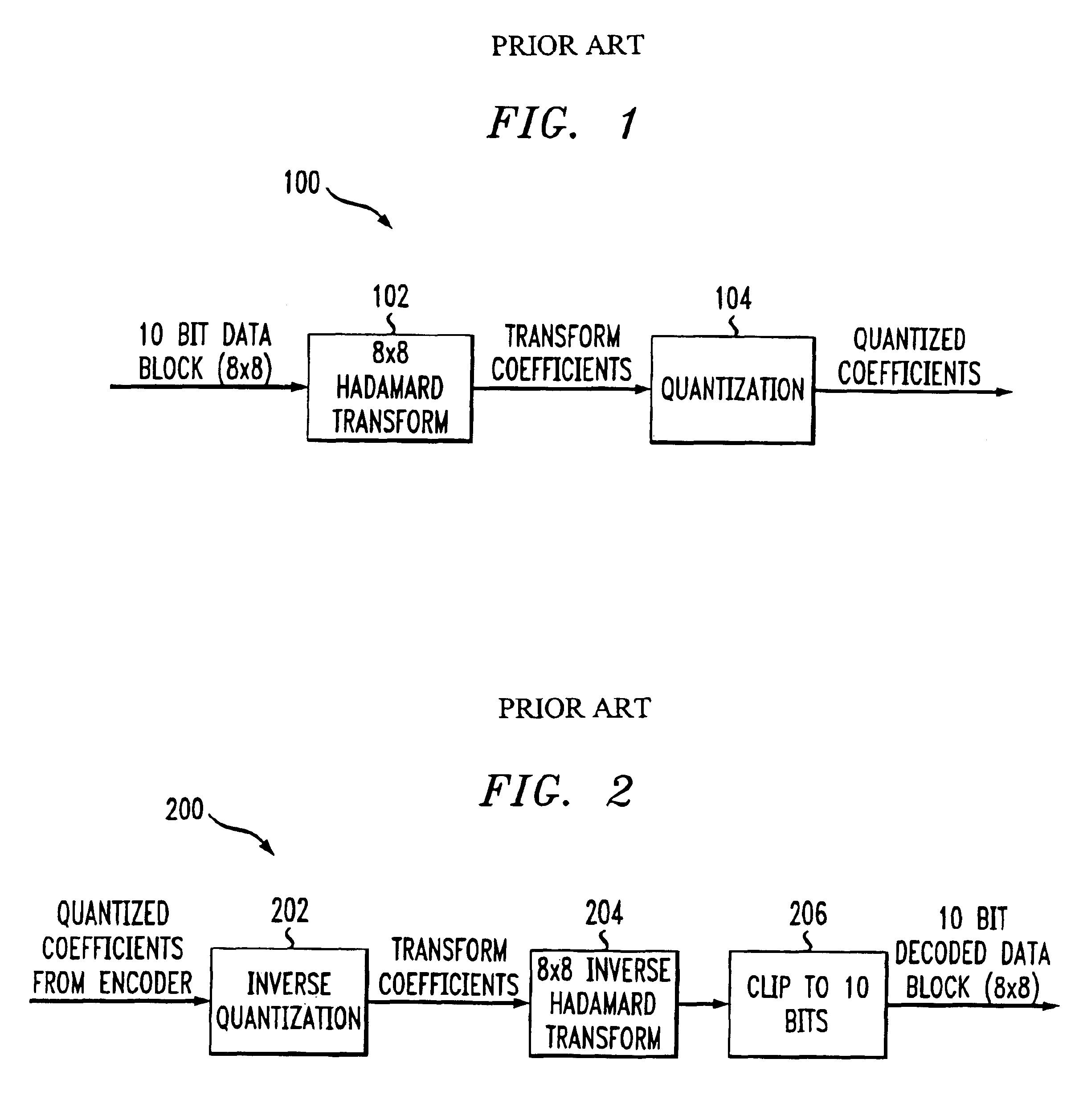Methods and apparatus for nearly lossless-concatenated block transform coding
- Summary
- Abstract
- Description
- Claims
- Application Information
AI Technical Summary
Problems solved by technology
Method used
Image
Examples
Embodiment Construction
[0014]As used herein, the term “video” or “video sequence” should be understood to include any frame or field sequence which is in a form suitable for encoding in accordance with standards such as, for example, H.261, H.263, Motion-JPEG, MPEG-1, MPEG-2 and MPEG-4. The terms “image” or “picture” as used herein refer to a frame or field of a video sequence. The term “block” as used in accordance with the invention is intended to include not only macroblocks as defined in the above-noted compression standards, but more generally, any grouping of pixel elements in a video frame or field. It is to be appreciated that such a grouping may include a set of pixels or a single pixel.
[0015]As mentioned above, the present invention provides a methodology to make block transform encoding / decoding be a nearly lossless-concatenated process. This implies that if repeated encoding and decoding is performed on a n×n block of data, then the loss / error introduced beyond the first encoding / decoding stag...
PUM
 Login to View More
Login to View More Abstract
Description
Claims
Application Information
 Login to View More
Login to View More - R&D
- Intellectual Property
- Life Sciences
- Materials
- Tech Scout
- Unparalleled Data Quality
- Higher Quality Content
- 60% Fewer Hallucinations
Browse by: Latest US Patents, China's latest patents, Technical Efficacy Thesaurus, Application Domain, Technology Topic, Popular Technical Reports.
© 2025 PatSnap. All rights reserved.Legal|Privacy policy|Modern Slavery Act Transparency Statement|Sitemap|About US| Contact US: help@patsnap.com



